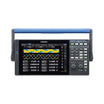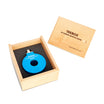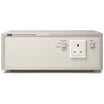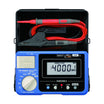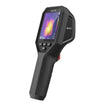
Aeroacoustics in Wind Tunnels
The main objective of wind tunnel testing is to develop and confirm aerodynamic designs. Across many industries such as automotive, aerospace & defense, renewables, industrial components and household appliances, wind tunnels are typically used for aeroacoustic measurements in hydro, laminar or turbulent flows.
This makes wind tunnel testing and noise path analysis under steady-flow conditions a very important component for minimizing vibrations and noise throughout the design, certification and operational phases of any manufacturing process.
Besides the steady conditions, an important advantage of wind tunnel testing is that it often reduces costs – either due to using scale models or due to the fact that in-situ testing can be very difficult and time consuming.
However, wind tunnel testing generally involves high costs linked to the preparation of the test item and operation of the wind tunnel. Therefore, it must be performed efficiently to get the most out of the limited testing time. Mounting, demounting, remounting as well as verification of sensors become highly critical for ensuring reliable data easily, efficiently and within budgets.
As an R&D engineer, you need reliable data and the only way of achieving this is stable measurements based on reliable microphones. GRAS offers a wide range of aeroacoustic microphones specifically designed for wind tunnel testing.
Read more about aeroacoustic measurements for automotive and aerospace testing solutions.
Download our Measurement Microphones for Aeroacoustics brochure.
Discover the new Ultra-Thin Precision (UTP) microphones with an ultra-small form factor, only 1 mm in height.


